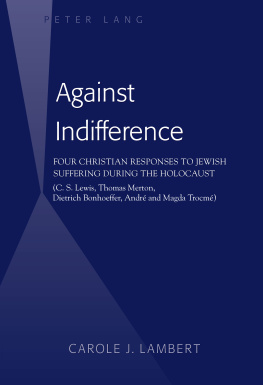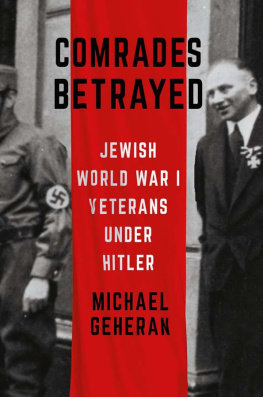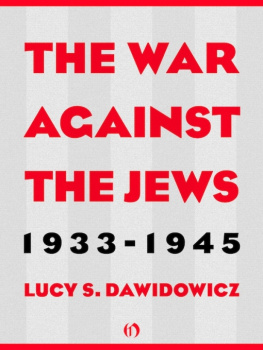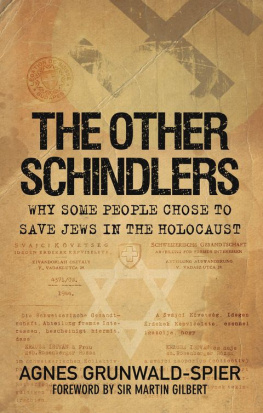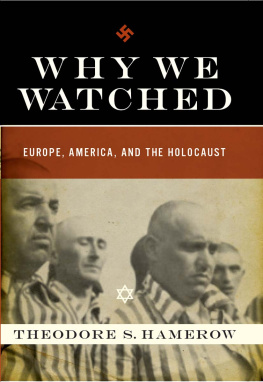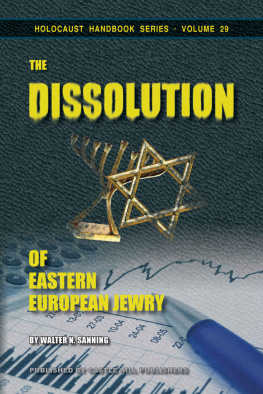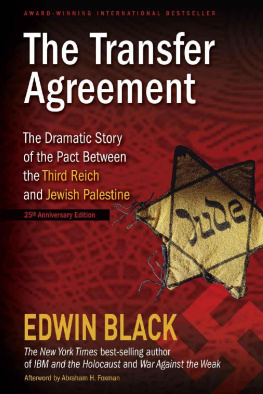First published 2008 by Transaction Publishers
Published 2017 by Routledge
2 Park Square, Milton Park, Abingdon, Oxon OX14 4RN
711 Third Avenue, New York, NY 10017, USA
Routledge is an imprint of the Taylor & Francis Group, an informa business
Copyright 2008 by Taylor & Francis.
The following chapters, The Case for Bombing Iran by Norman Podhoretz (June 2007), If Israel Ceased to Exist by Hillel Halkin (June 2007), Europe Terrible Transformation? by David Pryce-Jones (July-August 2007) are reprinted from Commentary, 2007, by permission; all rights reserv
All rights reserved. No part of this book may be reprinted or reproduced or utilised in any form or by any electronic, mechanical, or other means, now known or hereafter invented, including photocopying and recording, or in any information storage or retrieval system, without permission in writing from the publishers.
Notice:
Product or corporate names may be trademarks or registered trademarks, and are used only for identification and explanation without intent to infringe.
Library of Congress Catalog Number: 2008001822
Library of Congress Cataloging-in-Publication Data
The Jewish condition : challenges and responses--1938-2008 / [edited by]
William B. Helmreich, Mark Rosenblum, and David Schimel.
p. cm.
Includes bibliographical references and index.
ISBN 978-1-4128-0802-6 (alk. paper)
1. Jews--Identity--History--20th century. 2. Jews--Identity--History--21st century. 3. Jews--Politics and government--20th century. 4. Jews--Politics and government--21st century. 5. Jews--United States--Politics and government--21st century. 6. Jews--United States--Politics and government--20th century. 7. Jews--Historiography. I. Helmreich, William B.
II. Rosenblum, Mark. III. Schimel, David.
DS143.J4552 2008
305.8924009045--dc22
2008001822
ISBN 13: 978-1-4128-0802-6 (pbk)
William B. Helmreich
In April of 2007, a conference was held at Queens College regarding the state of world Jewry. None of us who organized the event had any idea as to the interest level among Jews for this topic. What we knew was that The Center for Jewish Studies had invited speakers each year to present lectures on Jewish subjects and that they had drawn an average audience of 150-200 participants
To our amazement, more than 1,000 people showed up. Several hundred who could not be accommodated in the main auditorium, watched the proceedings on video and an additional 250 people were, regrettably, turned away. This would have been a wonderful turnout anywhere but at Queens College it was remarkable. Unlike Manhattans 92nd Street Y, there was no real history of such conferences and the college, with no subway line reaching it, was not that accessible.
To be sure, the array of speakers, among them Norman Podhoretz, Michael Walzer, Irving Louis Horowitz, Malcolm Hoenlein, and Alan Dershowitz, was impressive. But, as conversations with the attendees revealed, the main impetus for the turnout was a certain level of concern, even angst, not seen in the Jewish community in many years. With all that had been achieved by Jews, people wondered, did they have good reason to fear for their safety and security? And they wanted these distinguished leaders and scholars to answer that question.
What fueled these concerns is difficult to say. A major factor would have to be the bellicose statements made by Irans President Ahmadinejad, threatening to wipe out Israel and his convening of an international conference challenging the fact that there had even been a Holocaust.
But there were other events too, of major significance, one of which was the 2006 conflict between Hezbollah and Israel. Israel has had numerous wars with its Arab neighbors, as everyone knows. What made this one different was the countrys inability to defend its major population centers from attacks on its civilians. Hezbollah attacked Haifa, Israels third largest city, and many other communities with impunity. The inconclusive end to the conflict, with many perceiving Israel as the loser, heightened Jews sense of insecurity. Imagine if a sovereign nation like Syria or Egypt attacked the Jewish State, they wondered? Could it survive? Those who scoff at the basis for such doubts would be well advised to remember the dictum of the early sociologist, W.I. Thomas: If men define situations as real, then they are real in terms of their consequences.
In Europe, Jews were become increasingly worried about the rising influence of Moslem communities hostile to Israel and Jews, and the seeming unwillingness of countries like France and England to confront them. Violence against Jews was reaching unprecedented heights and Jews, mostly in France, were beginning to leave in significant numbers.
These are broader events, and the essays in this volume speak to them. Originally presented at the conference, they have been revised for publication. They discuss and assess the threats facing both Jews and the Western world. While those writing are often in disagreement with each other, their differences tend to revolve around solutions to dilemmas, but almost never about their existence.
The conference theme raised the question of whether or not we are in a situation paralleling that of 1938, as Europe braced for the Nazi onslaught. None of the speakers thought so. Then again, neither did the conference conveners. Rather, the connection was suggested to provoke debate and it certainly did. Yet even as the speakers rejected the very idea of such a comparison, their presentations left many feeling that the Jewish community was facing some really serious issues and problems.
There were, in addition, other developments in the past year, that played an undetermined, but possibly pivotal role in raising the levels of anxiety in the Jewish community, and these could also account for the large turnout at this conference. Students of social movements will tell you that real concerns often find expression when accompanied by what the sociologist Neil Smelser called precipitating events that occur and there were plenty of them in the past year.
First there was the screed by Jimmy Carter. That a former President could rail against the Jews in an unbalanced book that was attacked for its shoddy research was deeply disturbing to many Jews. Even worse was the reluctance of some Jews to confront it. Brandeis University, an institution founded by Jews and academically committed to Jewish scholarship not only invited Carter to speak, but allowed him to dictate terms that violated the very principles of academic freedom he professed to champion. He spoke without challenge, without allowing anyone the opportunity to debate him.




